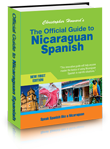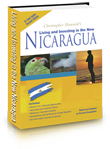How Much Does it Cost to Live in Nicaragua?
Lifestyle permitting, the cost of living in Nicaragua is generally less than in Costa Rica and most parts of the United States. But with the influx in tourism in recent years has come the beginning of a parallel economy: one for foreigners and well to do Nicaragua folk, and one for the rest of the locals.
For example, if you want to go out to eat dinner and have a couple of drinks, you have several options: you can go to a typical local restaurant and walk out having spent about $5 for a simple meal and a couple of beers; or you can go to a tourist restaurant, and do the same thing for about $10.
Since most foreigners still think it’s a steal to pay $10 for a good meal and some beer, many opt for the tourist restaurant. But for travelers on a shoestring, or families looking for a cheaper meal, know that local restaurants – or sodas – are available. Just ask around.
Overall, purchasing power in Nicaragua is greater than most other countries. But some items are – perhaps surprisingly – more expensive here. Electro-domestics, computers and vehicles are all about 30% more expensive in Nicaragua than they are in the United States, due to import duties and a limited offer of luxury items (there is no Circuit City or Wal Mart here, although there is a Price Mart). Gasoline, at more than $2 a gallon, is among the most expensive in Central America.
The real estate boom in the last five years has had a skyrocketing effect on property prices in hotspots such as San Juan del Sur and Granada, where the cost of colonial homes has doubled since the late 1990s.
But all things considered, housing still costs a fraction of what it does in attractive real estate markets in the U. S., and even parts of Costa Rica. The cost of hired domestic help and construction is, subjectively, low.
Electricity and water bills, although climbing, are still very affordable. Water utility bills are the least expensive in Central America, usually coming out to well under $10 a month, depending on usage.
You never need to heat your home or apartment because of Nicaragua’s warm climate. If you get chilly, put on a sweater. It never gets colder than that, and usually only drops to sweater temperatures at night in the mountains.
Prices for making phone calls are the exact opposite of what you expect them to be. International calls made from cyber cafes to the United States cost virtually nothing. The calls are make through Internet lines (Internet-Voice Overs) allowing you to talk for 30 minutes on a clear line for about $3. Local calls, and calls to other Central American countries, are a lot more expensive; costing as much as $.40 a minute from a cell phone (it is slightly less from a landline).
Public transportation is also very inexpensive. Bus fares to the provinces cost no more than $6 to the farthest part in the country. And inner city taxi travel usually costs $.30 to $.60 (and never exceeding $1.70 in Managua). Expect to pay more for taxis at night, and obviously more if you are hiring cabs to take you from one city to another. A cab from Granada to Managua, for example, will cost around $25, depending on the deal you strike.
Flying on domestic airlines La Costeña and Atlantica is also affordable, and makes otherwise difficult places to reach easily accessible. A roundtrip flight from Managua to Corn Island – the longest domestic flight you can take – costs only $110.
Healthcare is also very affordable, even without insurance. Doctor’s visits usually cost from $10-30, before medications. Even if you have to spend the night in a hospital, you normally won’t have to spend more than $100 for a private room.
Renting a home can be disproportionately expensive (compared to Costa Rica), because the rental market is still emerging and the supply is not greater than the demand. In Granada, a furnished home rents for about $350 to $1,500 a month, while a small unfurnished home, or a single private-entranced room with bath can be rented for around $250.
To live simply in Nicaragua, a single person should budget a minimum of around $500 a month. For double that amount, that same person can upgrade their lifestyle to near-extravagant, with money to hire a maid, go out every night and eat out two or three meals a day. Couples should plan on budgeting at least $750 a month (for a small house and simple, eat-at-home lifestyle) up to $2,000 to live like yuppies.
Grocery stores are another example of the parallel economy. If you purchase just basic food staples like many locals do, you can fill up your cart for about $30. If you are entrenched in your gringo eating habits, and insist on Hagen Daz, brand name Doritos and Gatorade, your final checkout bill will be a lot steeper.
The cost of entertainment is also affordable. Going to the movie theater with a date only costs a couple bucks, and you can afford to be generous buying other people drinks at the bar (domestic beers cost about $1.25 and a national rum and coke costs even less). A night on the town, even a big night, usually costs less than $20.
After living in Nicaragua for a while, you will learn the ins and outs and figure out ways to live more frugally, or economically. With time, you will get a better sense of what things cost and where to get them. Knowing Spanish doesn’t hurt. The more you sound like a local, the more locals will treat you like a local.
If follow the lead of the Nicaraguans and live a more modest lifestyle, you can save a lot of money and still enjoy yourself.




